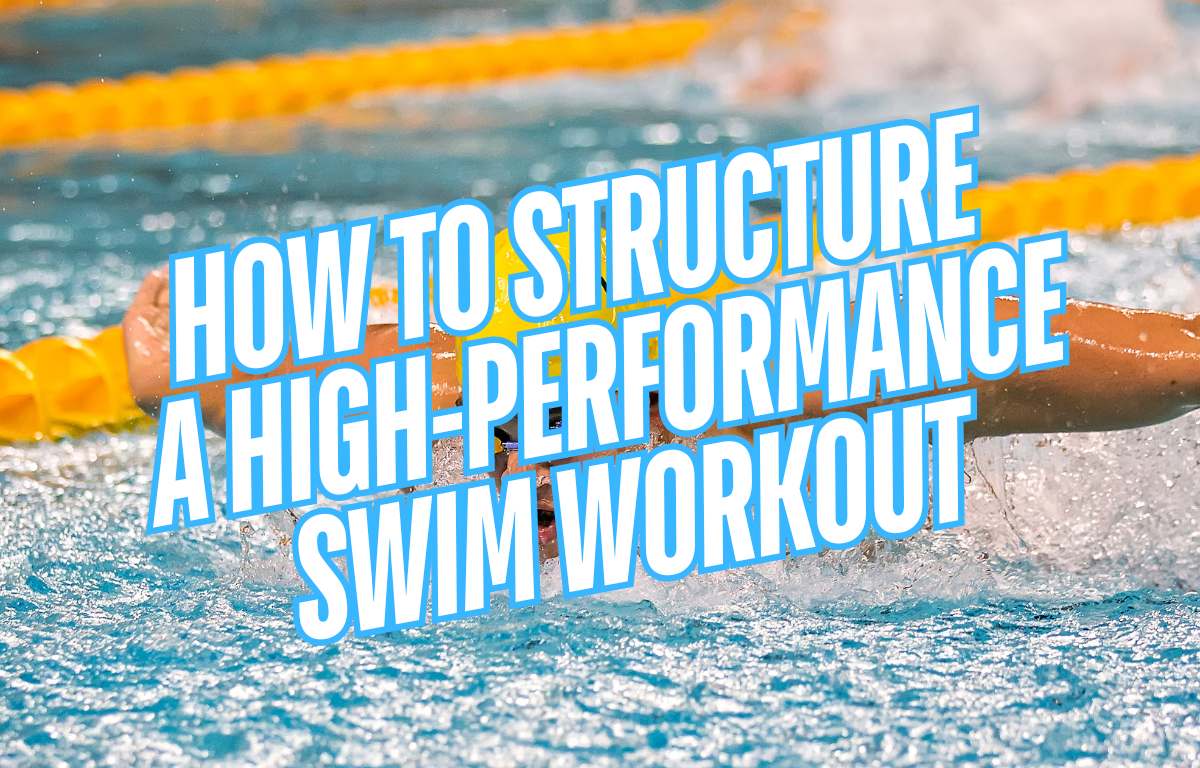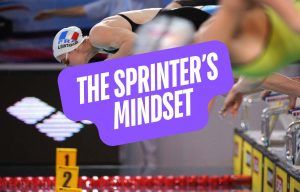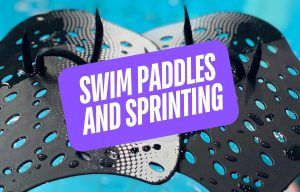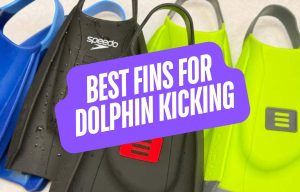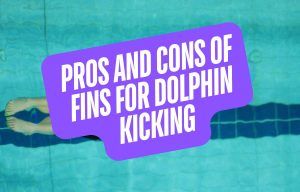Frustrated with ineffective, unfocused swim workouts? Here is how to organize a well-structured swim workout that delivers results and faster swimming.
Structuring a high-performance swim workout means that you get specific about what you want to accomplish in the water and have a clear plan to do it.
Simple enough!
But far too often, swimmers wing it when they hit the pool, leaving a lot of opportunities for improvement on the table.
In this guide to building a high-performance swim workout, we will walk you through the essentials for focused, performance-boosting swim workouts.
Let’s dive in.
The Blueprint for a High-Performance Swim Workout
The most important parts of creating a killer swim workout includes:
- Intent
- Gear
- Warm-Up
- Pre-Set
- Main Set
- Warm Down
- Evaluation
Next, we will look at each element in more detail, and by the end, you’ll have a crystal-clear idea of exactly what it takes to build a swim practice that launches you towards faster swimming.
Intent
Before you sketch out a meter or yard of the workout, it’s key to understand the purpose and intent of the swim workout.
Every swim workout should begin and end with a clear objective.
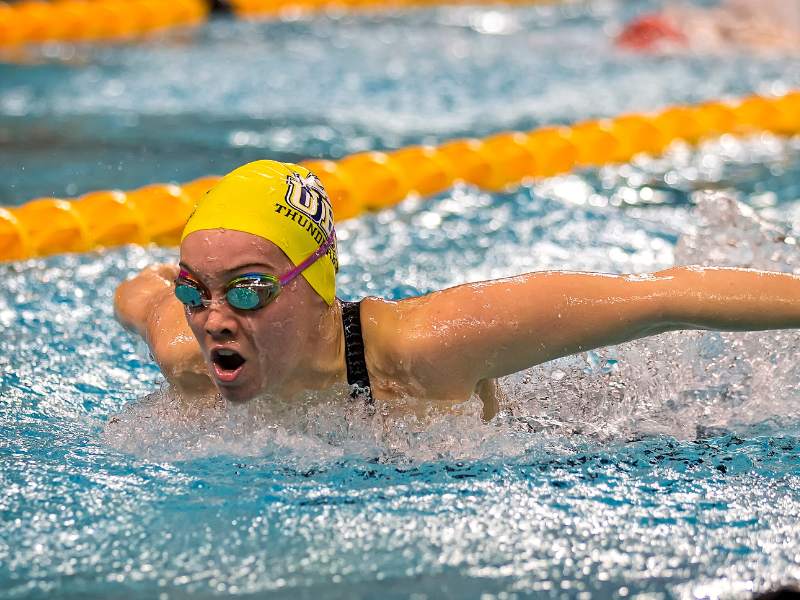
Are you looking to hit a specific number of meters? Swim a target number of race pace yards at 200 freestyle goal pace? Spend 45 minutes in an aerobic state? Use drills and light aerobic swimming for purely recovery purposes?
Training intents can include:
- Race pace yardage
- Total distance
- Average pace
- Stroke counts
- Power development
- Top-end speed
- Speed endurance
- Anaerobic capacity
- Heart rate training
- Recovery
- Race preparation
And so on.
By establishing a crystal-clear intent for your swimming workout, everything else will fall into place around it, from the warm-up to the main set to the warm-down.
Gear
Swimmers love their swim gear.
Whether we are talking about using swim training fins to create a rooster-tail of white water when sprinting or a drag chute to generate more power in your stroke, the right gear can help you maximize each swim workout.
When planning and writing out the warm-up, main set(s), and warm-down, keep a tally of the equipment you will use.
Having a handy list of the equipment and gear means you don’t get halfway through a big, nasty swim practice and realize that you forgot the centerpiece gear to use.
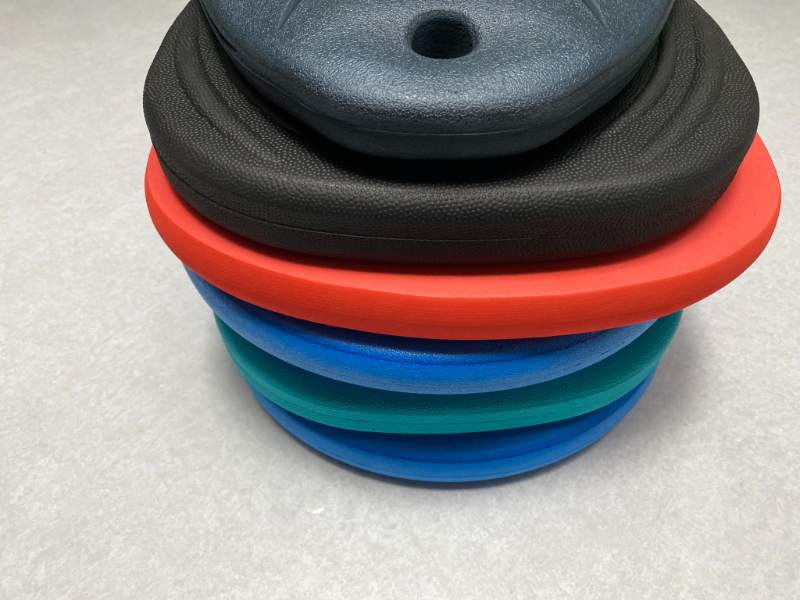
The obvious gear like a kickboard, pull buoy, paddles, and fins tend to be a mainstay in a swimmer’s mesh bag.
But other specialty equipment like resistance tubing, chute, DragSox, Tempo Trainer, swim snorkel can help develop key skills in the water.
List the swim gear you will use.
Warm-Up
Warming up is crucial for a successful swim workout as it prepares your muscles, joints, lungs, and cardiovascular system for the demands of the main set.
A pro warm-up includes a short dynamic dryland workout that includes arm swings, leg swings, and hip and torso rotations to increase the range of movement in the limbs and spine.
Consider adding core exercises to your dryland warm-up to activate the muscles in the trunk and spine. The almighty plank is an excellent all-around core exercise for swimmers that checks a lot of boxes for activation and is beginner-friendly.
👉 Tip: Add kicking to your warm-up to target the large muscle groups in the lower body and increase body temperature more quickly.
From there, it’s time to hit the water with a pool warm-up lasting up to 20 minutes, depending on your conditioning level.
Highly trained swimmers may need to increase the length and intensity of their warm-up to hit the appropriate body temperature level. In my peak swimming days, especially during challenging bouts of training, it could take up to 45 minutes of swimming to get me going.
A simple test to see if body temperature is sufficiently raised and swimmers are warmed up is the presence of perspiration or a flushed face.
Pre-Set
The pre-set is technically a part of the warm-up, but I like to separate it into its own element because it’s that important.
The pre-set is a short, specialized set designed to physically and mentally prepare you for the precise demands of the main set.
👉 Tip: The pre-set helps you mentally lock in, boosting concentration before the toughest part of your workout.
Here are two examples:
- For a main set that revolves around swimming 100s freestyle at a target pace, the pre-set could include 8×50 freestyle that descends to the target pace of the main set.
- For a main set focused on speed and power, 6×25 freestyle at 90% effort with a drag chute or DragSox will better activate all the muscle fibers required for all-out swimming later.
Basically, work backward from the main set and create a short set that activates you physically and mentally.
While the general warm-up is typically done with a fairly relaxed mindset and low/medium levels of effort, the pre-set requires increased focus and exertion that segues nicely into the demands of the main set.
Main Set
And here we go, the star of the show.
The main set!
This is where we get down to business; whether it’s a series of sprint intervals, rounds of endurance work, reps against lots of resistance, or target heart rate swimming, the main set is where the real work happens.
The sets, repetitions, intervals, and distance all reflect the primary intent of the workout.
Aim to be fully focused and engaged at every stage in order to push limits and achieve the primary goal of the swim workout.
So get after it!
Warm Down
After the completion of the main set, and you’ve peeled yourself off the pool deck and caught your breath, it’s time to warm down (also known as “cool down”).
While it’s tempting to stuff your gear back into your mesh bag and hit the bricks, warming down can help you supercharge recovery and improvement.
“There’s always something to improve: recovery, nutrition, sleep, strength, endurance, technique. It’s almost like this little game. You’re striving for perfection in a sport that it’s not possible to reach perfection in. It’s almost like an addiction, trying to be the best you can.” – Ryan Murphy, Olympic, NCAA, world champion
By using a properly planned warm-down, the body kickstarts the process of removing waste products, replenish energy stores, and begin repair of muscle tissue (Hornery et al., 2007).
A kick-butt warm down includes two phases:
Active recovery.
Swimmers should spend 10 to 20 minutes swimming at low intensity (50% of max intensity) to facilitate recovery.
One of my stand-by warm downs is 10×50 swim, alternating 25 freestyle, 25 backstroke with fins on, taking 20-30s rest per repetition.
A study published in the American Journal of Physical Medicine and Rehabilitation found that active recovery was superior for muscle recovery compared to passive recovery or static stretching.
Low-intensity swimming at the end of a big swim workout is also a great way to decrease the arousal and intensity of the main set and help you mentally transition back to the dry side of the pool.
Stretching.
Once out of the water, stretch for 10 to 20 minutes to bring muscles back to their anatomical length, increase metabolic exchange, and reduce delayed onset muscle soreness (Cheung et al., 2003).
Dynamic stretches (arm swings, leg swings), static stretches, and foam rolling are all effective ways to elongate muscles, decrease stiffness, and reduce DOMS, helping you recover faster for your next swim workout.
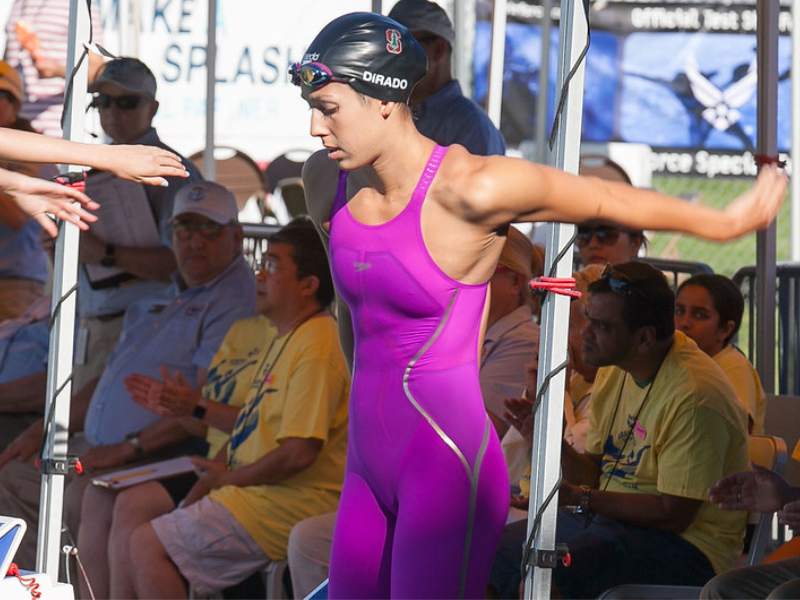
Stretching poolside after training also gives you an opportunity to reflect on the workout, discuss results with your swim coach, and simply chat and socialize with your teammates.
According to a study of competitive athletes published in the Journal of Sports Science, the combination of active recovery and stretching significantly boosted recovery from training and competitive stress.
Fast swimmers understand that it’s not just what you do during the main set that creates hyper-improvement, but how well they recover between sessions, and a structured warm-down is key to accelerate recovery.
Grading
Almost home!
Now that the swim workout is done, it’s time to reflect and assess the time spent in the water so that you can leverage things you are doing well, recognize your wins, and check in on things you can improve moving forward.
Which means assessing and grading the workout.
While certain metrics are comparably easy to track—total distance, time spent in the water, average heart rate—others like effort, focus, and technique can be harder to measure.
👉 Tip: Post-swim reflection reveals areas for growth, allowing you to fine-tune future training.
There are plenty of tools for swimmers to measure and analyze their swim workouts and assess just how “high-performance” the workout turned out:
Swim watches
Swim watches are one of the best tools for a detailed accounting of your swim training. Devices like those made by Apple, Garmin, Samsung, Fitbit and others are hydrodynamic, can be used as a pace clock, to check stroke count/rate, splits, and much more.
The devices are especially helpful for heart rate, which can be inconsistent when measured manually. Complementary apps can be used to measure and grade your performance in workout.
Smart goggles
Smart swim goggles, like the FORM 2 Goggles and the FINIS Smart Goggles, combine the power of real-time swim workout metrics in a heads-up display with detailed tracking and analysis. The live training data can be a hugely motivating tool to keep swimmers on track in the pool.
Swim apps
Swim apps come in a few different forms, depending on the device you choose to grade and measure your swim workout.
The native app on the Apple Watch, for example, is quite robust for general swim tracking, but for swimmers who want to dive deeper into the analytics of their training will want to check out third-party apps like those made by Phlex, Swim.com, and MySwimPro.
These apps tend to give you more flexibility with measuring and analyzing swim workouts compared to the native apps on most waterproof trackers for swimming.
Swimmers’ logbook
The old school tool for grading, measuring and analyzing your swim workouts is a swimmer’s logbook.
Either using a plain notebook or a specialized logbook for competitive swimmers—we make one here called YourSwimBook that is used by some of the top swim teams on the planet—swimmers are encouraged to reflect and grade on their swim training, leading to more improvement the next time they hit the water.
The Final Lap
Structuring your workouts in the pool is crucial to help you stay focused and on task each time you dive into the water.
While not all of us have aspirations of winning gold at the Olympics, we can all benefit from a more organized and focused training experience.
Whether you are trying to spend more time at a target heart rate, stack up race pace yards, or develop more strength and power in the water, having a well-structured approach can take your swim workouts from so-so to great-great.
Happy swimming!
More Training Tips and Guides
Do You Warm-Up with Purpose? How focused are your warm-ups in practice? Here’s how to get more from the part of your workout that gets the least amount of love.
7 Tips for More Effective Swimming Drills. Take your swimming drills to another level with these proven tips. Next stop: better technique and faster swimming!

